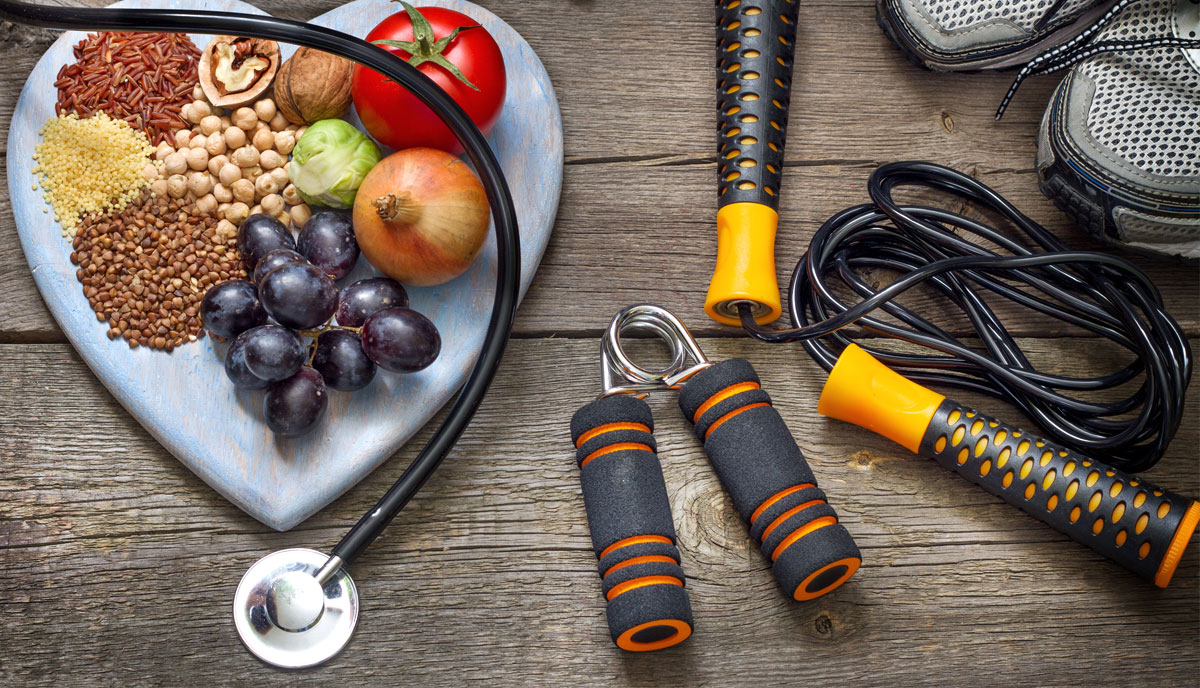
So I Have Diabetes... What Now?
Emma Keating
Pharmacy Intern
1.5 million Americans are newly diagnosed with diabetes every year.1 Diabetes is a disorder that disrupts the way your body processes and uses sugar. Insulin is the most important part of regulating your body’s blood sugar – when you intake sugar (or glucose), the pancreas releases insulin in order to move sugar out of the blood and use it for energy in the cells. There are two types of diabetes: type 1 and type 2. In Type 1, the body doesn’t make enough insulin by itself. In Type 2, the body makes insulin but doesn’t react to it the way it should. Either way, a new diagnosis of diabetes can be difficult and intimidating and you may be asking yourself “What now?”
While there is no cure for diabetes, there are several ways that you can control your condition:
Balanced Meals 2,5
While changing your eating habits may be daunting, nutrition is a powerful tool in the management of diabetes. The same nutritional action plan won’t work for everyone – but there are a few general rules that you can start with. Low carb, vegetarian and Mediterranean meal plans have been shown to lower blood pressure, encourage weight loss and lower A1C (a test that measures your average blood sugar). Choose whole and unprocessed foods over processed foods and limit foods with added sugars or refined grain. Eat fresh, frozen or canned non starchy vegetables such as corn, beans, beets, brussels sprouts, broccoli, cauliflower, mushrooms, kale, salad greens, peppers, and tomatoes. Stay hydrated and try drink water instead of sugary drinks such as soda. Know that just because you are changing your eating habits does not mean you won’t have any choices! There isn’t a “magic” regimen that will work for everyone, so find what works best for you to help manage your blood sugar levels.
Active Lifestyle 3,5
Exercising and being active can actually make your body’s cells more responsive to insulin. Making an exercise plan can be frustrating, but the most difficult part about getting into an exercise routine is starting! It does not matter what your baseline is – as long as you start, you are miles ahead of where you were. Start slowly with lighter activities such as walking and set goals for yourself to build along the way.
Staying motivated to keep moving can also be a challenge, but having a long lasting healthy habit is the best way to gain back some control over your diabetes. Having a friend or group to exercise with can be a huge inspiration – they keep you accountable and vice versa. Don’t be afraid to add some variety into your exercise routine, this can help you work more muscles and add a change of pace.
Medications 4,5
There are many types of medication available to help you manage your diabetes! Like changing your diet, there isn’t a “magic” medication regimen that will work for everyone – diabetes treatment is individualized and sometimes it takes a few trials to find what works best for you. Generally, your medication depends on what type of diabetes you have. Some treatment plans include oral medications while others are injectable. For type 2 diabetes, many doctors start by initially prescribing a medication called metformin and then reassessing your blood sugar levels after 2-3 months to see if you would benefit from a higher dose or another medication. For type 1 diabetes, treatment typically starts with insulin right away instead of other types of oral or injectable medication. Self monitoring of your blood sugar may be suggested by your doctor. Be sure to work closely with your doctor and your pharmacist to make sure you are getting the most from your medications!
Some of the medications that your doctor might prescribe may include:
- Metformin – this medication is generally the first treatment option and is prescribed to most people who are newly diagnosed with type 2 diabetes to reduce high blood sugar levels. This is an oral medication that makes your body more responsive to insulin and can be taken once or twice daily.
- Common side effects can include nausea, diarrhea and gas but this can be reduced by taking metformin with food.
- People with serious kidney, liver or heart disease or those that have high alcohol intake should not take metformin.
- Sulfonylureas (glipizide, glyburide, glimepiride) – these medications are some of the first that were developed to treat diabetes! They are the most inexpensive medication for diabetes. They increase the amount of insulin your body makes and work really well at first, but the effects gradually fade.
- These medications can cause low blood sugar or “hypoglycemia” which can present as sweating, shaking, or feeling anxious / confused. If this occurs, quickly eat 10-15 grams of glucose (can be a glucose tablet, or something you have on hand such as fruit juice)
- People with kidney failure should not take these medications.
- DPP-4 Inhibitors (Januvia, Tradjenta, Nesina, Onglyza) – these medications increase the insulin release from the pancreas after a meal. They will help lower A1c, but tend to lower it less than other medications. Usually these medications are taken orally once daily.
- Common side effects can vary depending on the medication, but can include headache and low blood sugar, especially if you are taking it in combination with another medication.
- SGLT2 inhibitors (Invokana, Jardiance and Farxiga) – these medications lower your blood sugar by increasing the amount of sugar your body excretes in the urine. They are typically taken orally once a day. Jardiance and Invokana have been shown to have some benefit in patients with heart or kidney disease.
- Common side effects include urinary tract infections and dehydration.
- GLP-1 Receptor Agonists (Byettam Bydureon, Victoza, Trulicity, Ozempic) – these are injectable medications that increase insulin release after a meal and have a lower risk for low blood sugar. The dosing schedule varies depending on the medication, some are injected weekly while others are daily. They can also assist with weight loss as they tend to make people have the sense of feeling full after eating less.
- Common side effects include nausea, vomiting and diarrhea but tend to improve over time
- Insulin (Novolog, Humalog, Lantus, Basaglar, etc…) – injectable insulin can be added to oral medications or used by itself. When using insulin, it is very important to self-monitor your blood sugar to make sure you don’t inject more than what your body needs as this could cause low blood sugar. Insulin may need to be injected several times daily depending on your blood sugar the type of insulin your doctor prescribes.
Living with diabetes can be very stressful but by keeping up with your medications and developing healthy eating and exercising habits it can be managed. If you have questions or concerns about your treatment plan, don’t be afraid to reach out to your healthcare provider or your local pharmacist at Price Chopper/Market 32!
SOURCES
- American Diabetes Association: Newly Diagnosed [Internet]. 2020 [cited 2020 Aug 27]. Available from: https://www.diabetes.org/diabetes/newly-diagnosed
- American Diabetes Association: Nutrition [Internet]. 2020 [cited 2020 Aug 27]. Available from: https://www.diabetes.org/nutrition
- American Diabetes Association: Get Fit and Stay Fit [Internet]. 2020 [cited 2020 Aug 27]. Available from: https://www.diabetes.org/fitness/get-and-stay-fit
- Wexler DJ, Nathan DM, Mulder JE. Patient Education: Type 2 Diabetes: Overview Beyond the Basics [Internet]. 2020 [cited 2020 Aug 27]. Available from: https://www.uptodate.com/contents/type-2-diabetes-overview-beyond-the-basics?topicRef=1737&source=see_link
- Wexler DJ, Nathan DM, Mulder JE. Patient Education: Type 2 Diabetes: Treatment Beyond the Basics [Internet]. 2020 [cited 2020 Aug 27]. Available from: https://www.uptodate.com/contents/type-2-diabetes-treatment-beyond-the-basics

